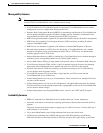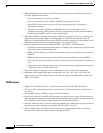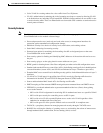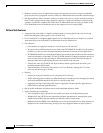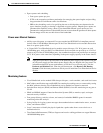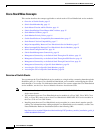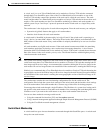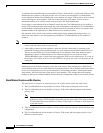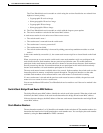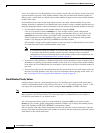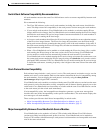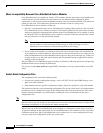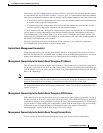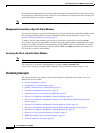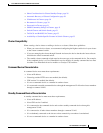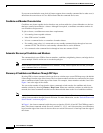
Cisco EtherSwitch Service Modules Feature Guide
Information About the Cisco EtherSwitch Service Modules
15
Cisco IOS Release 12.2(25)SEC
The Cisco EtherSwitch service module or switch using the versions listed below are ordered from
highest to lowest priority:
–
Cryptographic IP services image
–
Noncryptographic IP services image
–
Cryptographic IP base image
–
Noncryptographic IP base image
5. The Cisco EtherSwitch service module or switch with the longest system uptime
6. The service module or switch with the lowest MAC address
A stack master retains its role unless one of these events occurs:
• The switch stack is reset.*
• The stack master is removed from the switch stack.
• The stack master is reset or powered off.
• The stack master has failed.
• The switch stack membership is increased by adding powered-up standalone modules or switch
stacks.*
In the events marked by an asterisk (*), the current stack master might be re-elected based on the listed
factors.
When you power up or reset an entire switch stack, some stack members might not participate in the
stack master election. Stack members that are powered up within the same 10-second timeframe
participate in the stack master election and have a chance to become the stack master. Stack members
that are powered up after the 10-second timeframe do not participate in this initial election and only
become stack members. All stack members participate in re-elections.
The new stack master becomes available after a few seconds. In the meantime, the switch stack uses the
forwarding tables in memory to minimize network disruption. The physical interfaces on the other
available stack members are not affected while a new stack master is elected and is resetting.
If a new stack master is elected and the previous stack master becomes available, the previous stack
master does not resume its role as stack master.
You can use the Master LED on the Cisco EtherSwitch service module to see if the service module is the
stack master.
Switch Stack Bridge ID and Router MAC Address
The bridge ID and router MAC address identify the switch stack in the network. When the switch stack
initializes, the MAC address of the stack master determines the bridge ID and router MAC address.
If the stack master changes, the MAC address of the new stack master determines the new bridge ID and
router MAC address.
Stack Member Numbers
The stack member number (1 to 9) identifies each member in the switch stack. The member number also
determines the interface-level configuration that a stack member uses. You can display the stack member
number by using the show switch user EXEC command.



